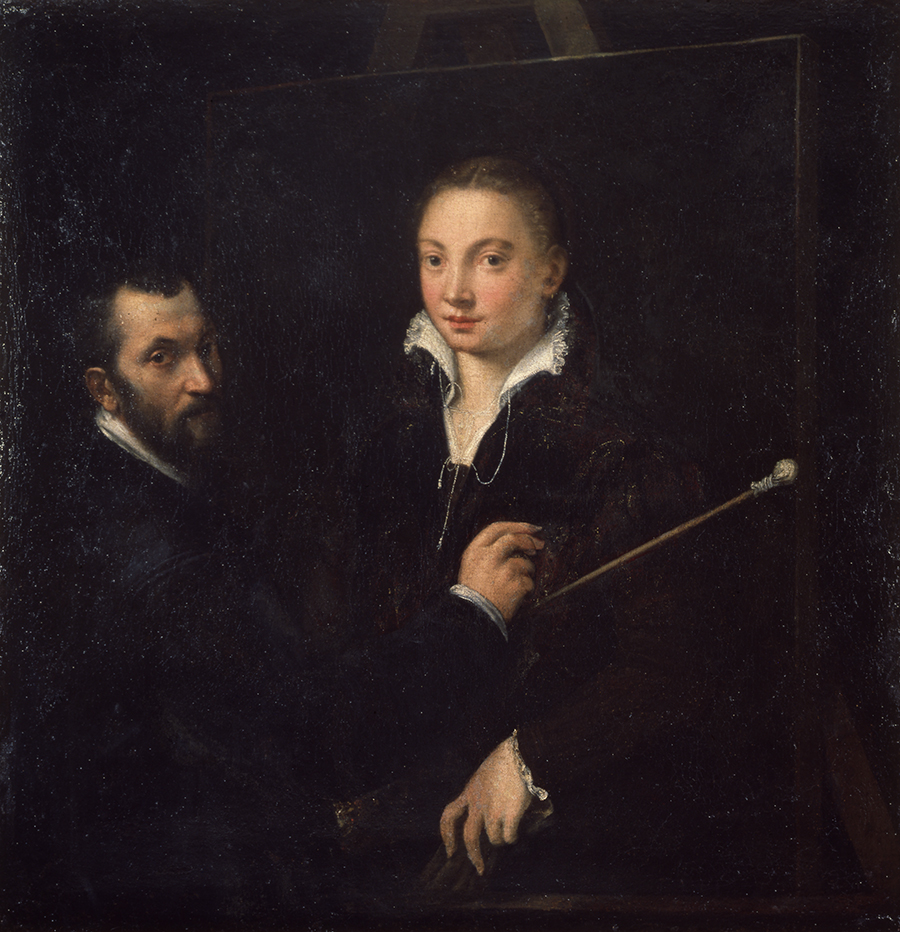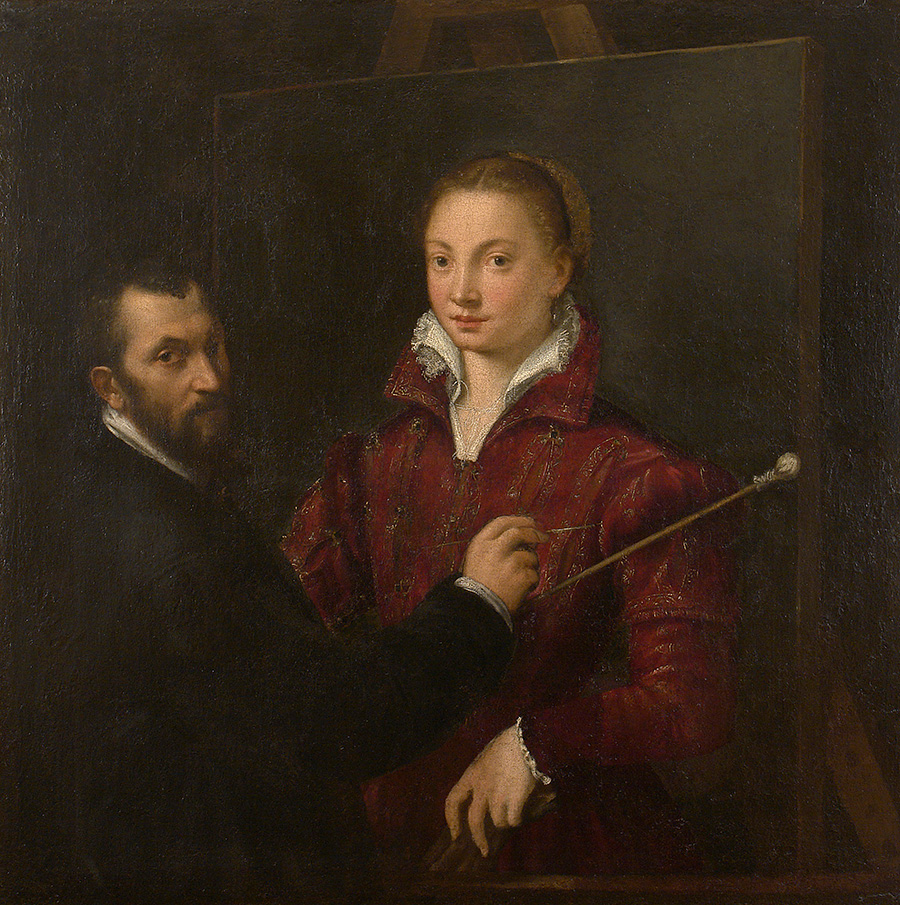A Renaissance Joke: What a 500-Year-Old Self-Portrait Reveals
Sofonisba Anguissola’s ‘Self-Portrait with Bernardino Campi’ literally and metonymically reveals the hand of the artist
Sofonisba Anguissola’s ‘Self-Portrait with Bernardino Campi’ literally and metonymically reveals the hand of the artist

Sofonisba Anguissola’s Bernardino Campi Painting Sofonisba Anguissola (c.1559) is a reminder that works of art are living objects, bearing traces of their experiences. A sophisticated mise-en-abyme – a painting within a painting – depicting Campi, an artist from Reggio Emilia, working on a portrait of his student, the young Anguissola, it has mutated over nearly five centuries to reveal not only, literally and metonymically, the hand of the artist, but an aggregation of interventions by critics and restorers. It hangs today in the Pinacoteca Nazionale di Siena – a reworked, rethought, approximated realization of Anguissola’s intentions, full of the mystery and weight of its indistinct history, and of the singular, inventive talent of one of the few female artists to be mentioned in Giorgio Vasari’s Lives of the Most Excellent Painters, Sculptors and Architects (1568).

Thought to date from the late 1550s, when the artist was in her 20s, this double portrait announces Anguissola’s particular creative energy, her mastery of the illusion of space, of emulating in paint flesh, fabric, expression, texture. A student of Michelangelo and, later, a court painter to Philip II of Spain, Anguissola triumphed over the restrictions of her gender, establishing herself as the ‘miraculous painter from life’ – as a young Anthony van Dyck described her when he visited Anguissola in Palermo to paint her portrait, a year before she died at the age of 93.

Her talent and innovative spirit were made particularly apparent in a short-lived version of the self-portrait with Campi that was exhibited in Siena for five years between 1997 and 2002. Showing Anguissola with a third arm reaching to take the brush from her teacher’s hand – as if her portrait within a painting had come suddenly alive – the work served as an allegory for the act of teaching. Floating up beneath a layer of dark varnish applied, it is believed, in the 19th century, Anguissola’s third arm provoked a number of questions for the Sienese restorers when they discovered it in 1996.
Unlike most pentimenti – visible corrections made by artists in the process of painting – the arm is unusually detailed: the intricate lacing on her cuff delicately rendered, a gold bracelet on her wrist detailed with encrusted rubies. Although radiographic analysis would lead the restorers to obscure the third arm, as they believed Anguissola had ultimately intended, the extent to which it has been finished gives a vital window into the artist’s practice. Just as she demonstrates the process of idealization that characterizes portraiture – in depicting Campi modelled from life, convincingly rounded, while her own image is painted flat and less lifelike – in Anguissola’s spectral third arm we are given an insight into how she used the malleability of oil as a medium to explore the composition as she worked, alla prima – wet-on-wet – thinking through the paint.

Inventive and playful, Anguissola explored the narrative potential of portraiture, pushing the limits of the genre she was restricted to, prohibited as a woman from studying the nude figures necessary to depict history and religious paintings. Not only was she the most prolific self-portrait painter before Rembrandt, in depicting herself being painted by Campi, Anguissola pioneered an iconography that was unparalleled for at least half a century. So unique is this form of self-representation – a portrait not as a painter but as a painting, not as an artist but as an artwork – that the work’s true meaning has remained a mystery, even as it continues to live, telling new stories and provoking new ways of thinking about art.
This article first appeared in Frieze Masters issue 8 with the headline ‘Spot the Difference’.
‘A Tale of Two Women Painters: Sofonisba Anguissola and Lavinia Fontana’ is at Museo Nacional del Prado, Madrid, Spain, from 22 October 2019 to 2 February 2020. In 2019, the Prado celebrates its bicentennial.























